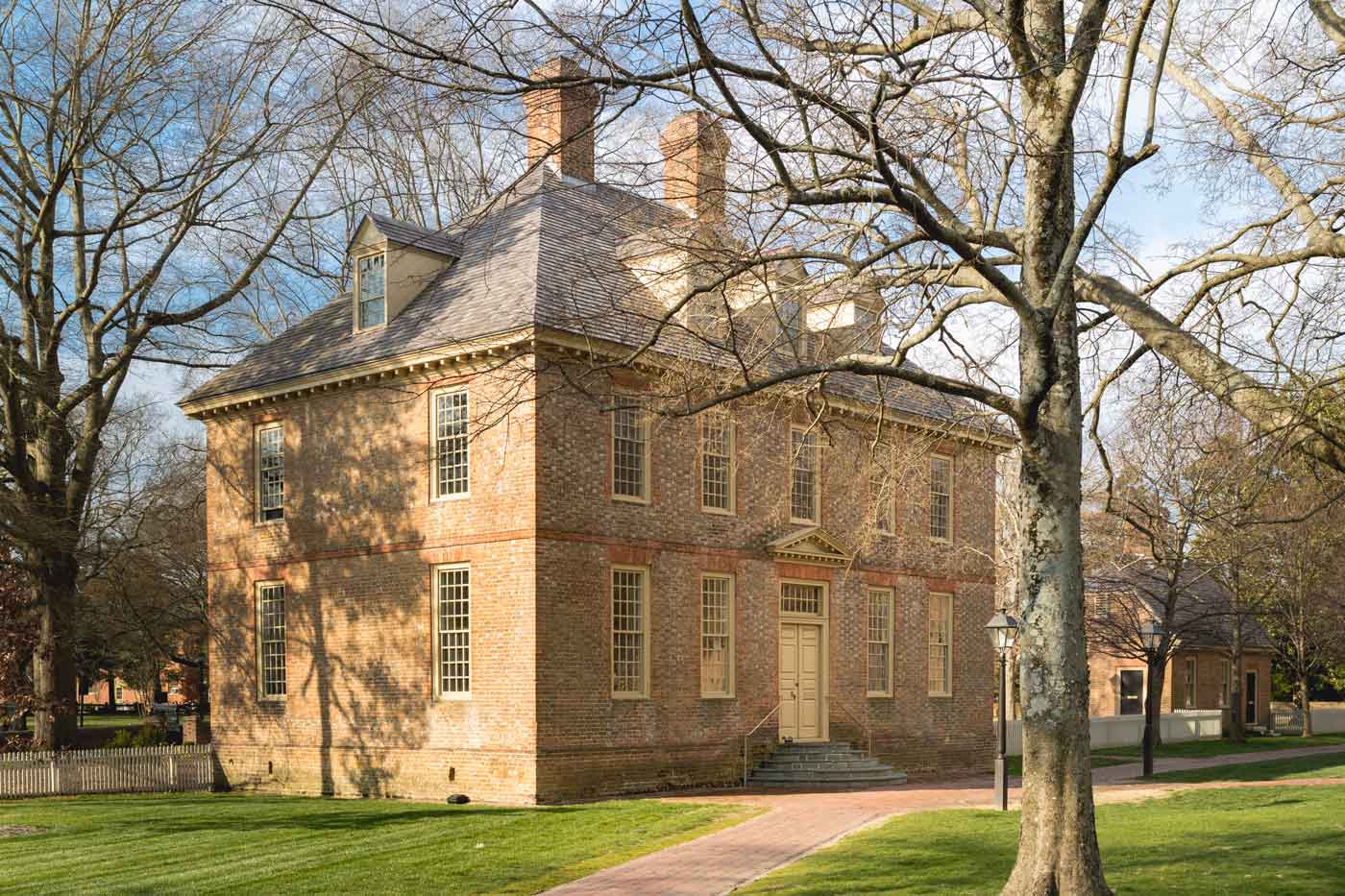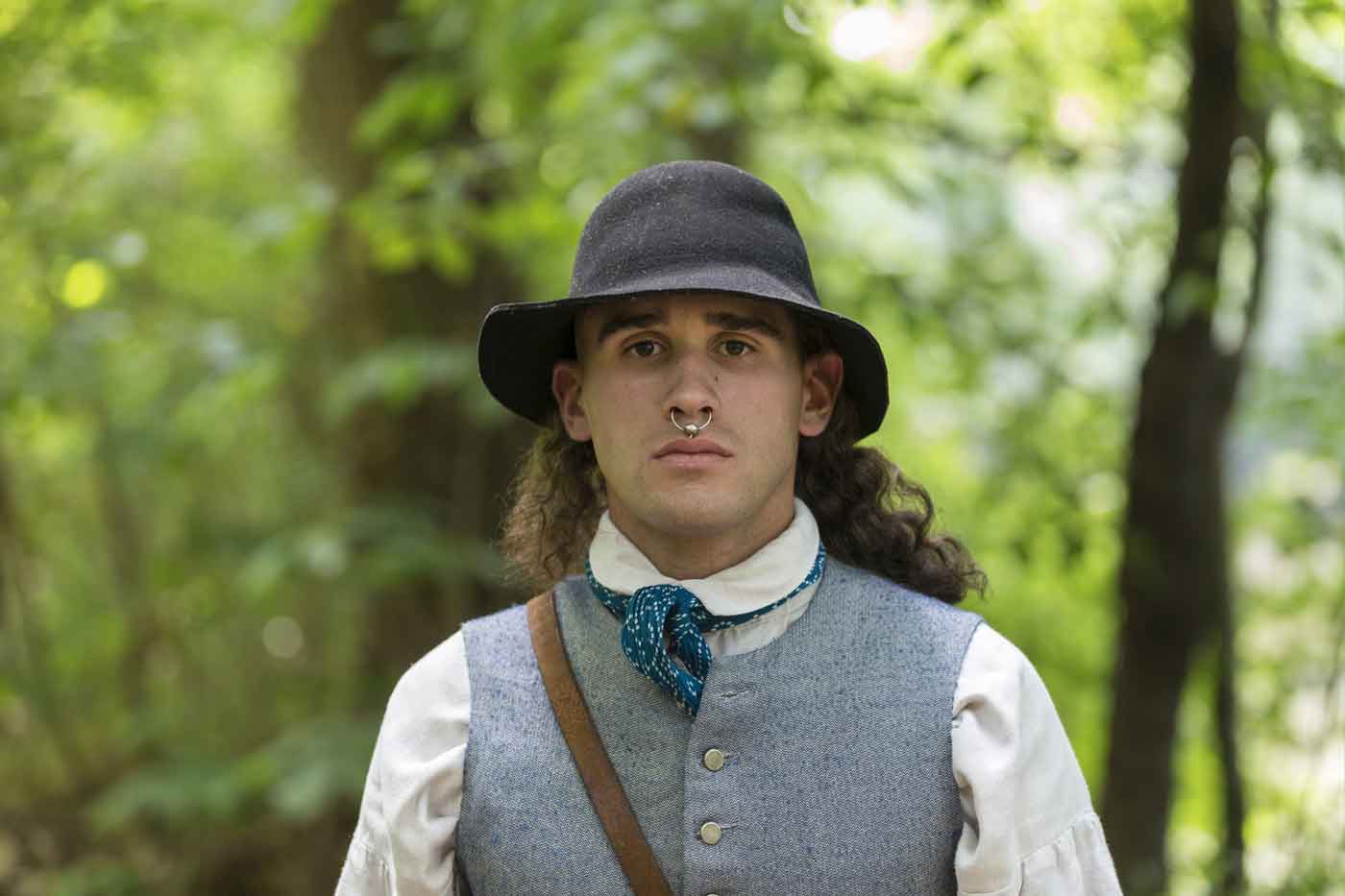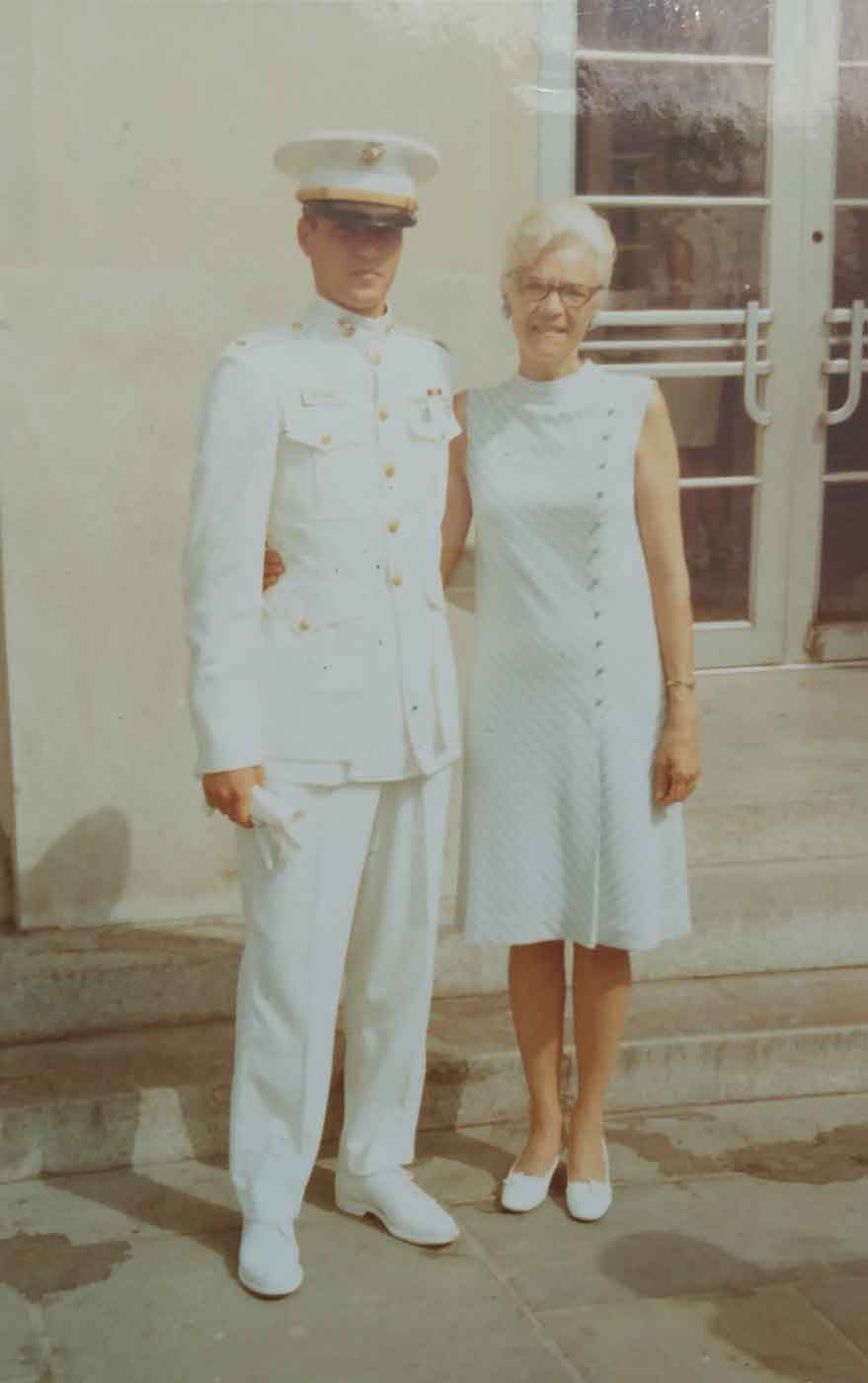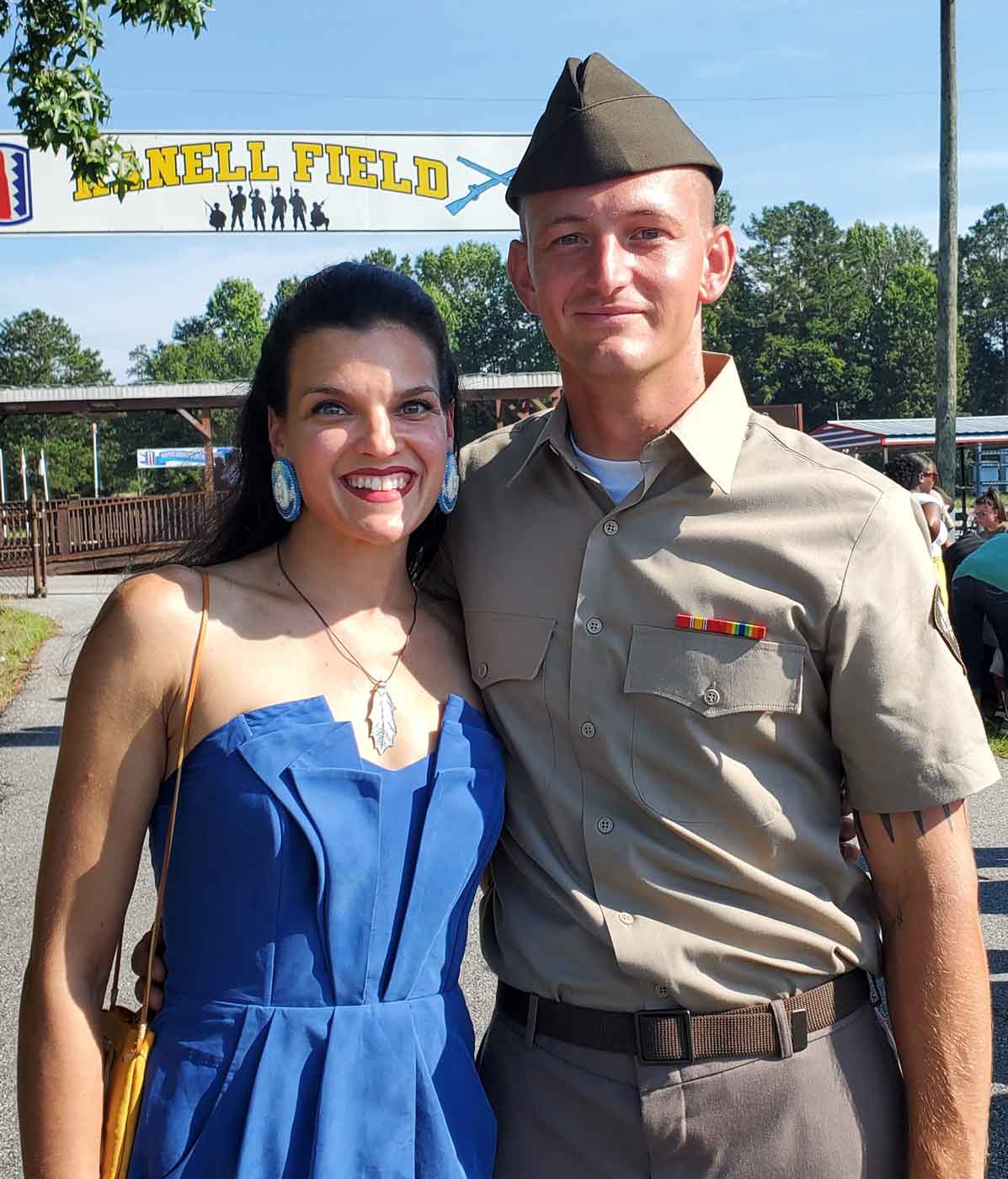On this Veterans Day, it is important to reflect on the fact that Indigenous Americans have fought in every war in U.S. history. I want to acknowledge and lift up the stories of Indigenous American veterans of the past and present. I’ll begin with two local Native veterans from the 18th century. Robert Mursh (sometimes Mush/Marsh) and George Sampson, enlisted here in Williamsburg in 1776 to fight on the side of the Patriots.
Mursh and Sampson, both from the local Pamunkey tribe, arrived in Williamsburg in 1769, becoming students at the Brafferton Indian School at William & Mary. Their time in the “revolutionary city” and their education swayed them to fight for the cause in which Virginia enlisted.

After enlistment, both young men were involved in battles in the north, Sampson eventually died while serving in New Jersey. Several Pamunkey wives and children of soldiers, including Sampson’s widow, petitioned the General Assembly in Williamsburg for financial support.
Robert Mursh re-enlisted in the Continental Army. He was in Charleston when that city was surrendered to the British, and he himself was captured and became a prisoner of war for 14 months. He was eventually released in a prisoner exchange, joined another regiment, and remained in the Army until the end of the war.
Robert and his wife, Elizabeth, who is believed to have been Catawba, were impoverished and eventually applied for his pension. After 7 years of service to his country, the couple still had to enlist legal help to draw his pension. The validity of their marriage was brought into question and stalled the process. Their first marriage ceremony was performed in the traditional Pamunkey way, and they chose to re-marry in the Baptist Church over a decade later when he decided to take religious orders. The struggle to maintain Robert’s pension continued after his death, as Elizabeth was forced to fight for it several times throughout the 1840s, including a request for Robert’s back pay.

The struggles of couples dealing with government bureaucracy were not restricted to the past but are still alive and well today. The U.S. Army is very particular about not only the administration of benefits, but the mere basic information of a troop’s whereabouts, and who gets to know that information, as I found out when my partner went away to One Station Unit Training (OSUT).
As a Native man, he made the choice to enlist in the Army National Guard. One of his reasons for selecting the National Guard was because it reflects most closely the Indigenous warrior tradition of his ancestors. The concept of a local militia began on Turtle Island, what we now call the United States and Canada, with Native men and sometimes women, who were regularly training as soldiers and going to battle when called to protect their communities. Stretching back throughout history, Native men here in the Eastern Woodlands would have served in a military fashion as the need arose. They trained throughout the year, while also maintaining their other full-time responsibilities, much as my partner has his full-time job here at home. The U.S. Army National Guard is also historically important as it was the first component of the U.S. military and is therefore the oldest of the armed services.
Native Veterans were and are the protectors of this land, and they have served in every war since the beginning of this country, as my colleague Kody Grant articulated in his 2020 Memorial Day blog titled Warriors Stood There. There’s a frequently quoted statistic from the U.S. Department of Veterans Affairs that goes like this: “Indigenous veterans have served in the U.S. armed forces in larger proportion to their population than any other group.” Some writers have debated the exact data that this is based on, but no one disagrees that Native representation is exceptionally high.
Many people want to know why Native veterans would choose to put their lives on the line for a country that has treated them so awfully throughout history. Why would they choose to serve a government that consistently breaks treaties and the obligations outlined in those documents?
The answer to that is complex. Cultural motivations include a commitment to the protection of tribal lands, to this land we call the United States, responsibilities to kin and tribal traditions, and upholding treaty alliances, whether the other side is upholding their end or not. That’s true honor. They also share some of the same motivations as everyone else: for an education, to learn new skills and explore new places, to follow in the legacy of those who served before them, or for those who came from a background of poverty, to obtain basic needs and stability.
Native Veterans have faced the same disavowal on the home front and lack of recognition that other veterans face. However, they also experience a paradox: sometimes being shown appreciation for the job that they do, while still not being respected as Indigenous people. Leslie Marmon Silko explores this emotional canvas in her 1977 masterpiece, Ceremony.
“The first day in Oakland he and Rocky walked down the street together and a big Chrysler stopped in the street and an old white woman rolled down the window and said, ‘God bless you, God bless you,’ but it was the uniform, not them, she blessed.”
Leslie Marmon Silko, Ceremony. 1977.
Native veterans and their dependents suffer the mental and physical effects of serving at much higher rates than any other group, as reported by the U.S. Department of Veterans Affairs. These health disparities include chronic pain, diabetes, hypertension, and post-traumatic stress disorder. The Department of Veterans Affairs report from the Office of Health Equity states: “AI/AN [American Indian/Alaska Native] Veterans who use the VA, experience post-traumatic stress disorder (PTSD) at a greater rate than all other Veteran groups.”

Veterans hold a special place in Indigenous societies on Turtle Island. All powwows include a special drum song to honor veterans. At Virginia powwows, this is a time where all veterans in attendance, whether Indigenous or non-Indigenous, are invited into the circle to walk behind the flags and be celebrated, loved, and supported by the attending crowd.
Today I want us to hold space for all of our veterans, Native and non-Native, and to remember and honor the Indigenous ancestors who have protected this land since time immemorial.

Fallon Burner is the daughter, niece, sister, sister-in-law, and girlfriend of United States Army and Marine Corps veterans. She is the Assistant Research Historian in CW’s Historical Research and Digital History department and is an Atlantic World historian specializing in histories of Indigenous peoples in the Eastern Woodlands.
Further Reading
Grant, Kody. “Warriors Stood There.” Colonial Williamsburg blog, May 22, 2020.
Harris, Alexandra N., and Marg G. Hirsch. Why We Serve: Native Americans in the United States Armed Forces. Washington, D.C.: the National Museum of the American Indian, Smithsonian Institution, 2020.
Korshak, Lauren, MS, RCEP, et al. “American Indian/Alaska Native Veterans Fact Sheet.” Office of Health Equity, Veterans Health Administration, Department of Veterans Affairs.
Robinson, Gary, and Phil Lucas. From Warriors to Soldiers: A History of American Indian Service in the United States Military. 2010.
Silko, Leslie Marmon. Ceremony. 1977.
U.S. Department of Veterans Affairs, Office of Tribal Government Relations. Honoring Our Heroes: Building Partnerships to Connect Native Veterans to Care and Benefits. Tribal Consultation Report, 2016.
Viola, Herman J. Warriors in Uniform: The Legacy of American Indian Heroism. Washington, D.C.: National Geographic, 2008.
Colonial Williamsburg is the largest living history museum in the world. Witness history brought to life on the charming streets of the colonial capital and explore our newly expanded and updated Art Museums of Colonial Williamsburg, featuring the nation’s premier folk art collection, plus the best in British and American fine and decorative arts from 1670–1840. Check out sales and special offers and our Official Colonial Williamsburg Hotels to plan your visit.
